
Custard Brioche: The Recipe for a Buttery Brioche with a Creamy and Irresistible Filling

Looking for a show-stopping tea-time treat that's both impressive and easy to make? Look no further than Custard Brioche! This treat takes the classic buttery brioche to a whole new level with a hidden heart of rich and creamy custard. Custard Brioche is perfect for a special occasion brunch, a delightful afternoon tea, or simply as a treat. You don't need to be a master baker (or expensive ingredients) to create this beauty. Simply prepare the custard, pipe it on top of the brioche dough, and bake until golden.
What is Custard Brioche?
The foundation of our Custard Brioche, the brioche itself, has a rich history. Originating in France sometime in the 14th or 15th century, brioche was a luxurious bread enjoyed by the wealthy. Its characteristic richness comes from the high butter content, creating a tender and flavorful dough.
Custard, on the other hand, has more ancient roots. Recipes using eggs and milk to thicken dishes appear in cookbooks from as early as the Roman Empire. Over the centuries, custard evolved into various forms, with the French developing techniques for creamy custards like crème pâtissière used in pastries.
Who exactly decided to combine these two culinary delights into Custard Brioche is unclear. However, similar filled brioche recipes start appearing in French cookbooks and culinary resources around the late 19th and early 20th centuries. These might have been inspired by existing pastries like Portuguese "pastel de nata" which feature a rich egg custard filling.
Brioche Vs. Bread: What's The Difference?
Brioche is a type of French bread known for its high butter and egg content, which gives it a rich, tender crumb and a golden, glossy crust. Unlike regular bread, which typically relies on water, yeast, flour, and a small amount of fat, brioche is closer in texture and flavor to a pastry due to its enhanced richness. The dough is softer and stickier than most bread doughs, making it a bit more challenging to handle. Brioche is often used for desserts and sweet dishes but can also be an excellent base for savory sandwiches, providing a luxurious contrast to typical bread. This indulgent bread's sweet, buttery flavor and soft, fluffy texture set it apart from more traditional, plainer bread loaves.
Tips
- Start with the custard so it will have some time to cool down.
- If you want to make the recipe ahead of time, you can proof the dough overnight in the fridge. And then continue with the recipe the next day.
- Use strong "00" flour for best results, but if you’re in a pinch, you can also use all-purpose or cake flour.
- If you see the tops are browning too quickly, top the baking tray with a piece of foil, and cook until the baking time is done.
- Before serving, the brioche can be sprinkled with powdered sugar, or drizzled with caramel, chocolate ganache, or frosting.
Can I Use Store-Bought Brioche Dough?
Absolutely! This can be a great time-saver. Look for high-quality brioche dough from your local bakery.
What Kind Of Milk Can I Use For The Custard?
Whole milk (full-fat) will create the richest custard, but skim or low-fat milk can also be used as a lighter option.
My Custard Seems Runny, What Went Wrong?
The custard might not have cooked long enough. Ensure it reaches a thick and glossy consistency before assembling the brioche.
How Do I Know When The Brioche Is Done Baking?
The brioche should be golden brown on the outside and sound hollow when tapped on the bottom.
Can I Reheat Custard Brioche?
Yes! To retain its fresh texture, reheat individual slices in a low oven (around 300°F) for a few minutes until warmed through.
More Custard Recipes You're Going to Love
How To Store Custard Brioche
The brioche is best served within one hour of baking. Filled Brioche can be stored in the refrigerator for several hours, just make sure to keep it in an airtight container to prevent it from picking up flavors from the fridge. Allow the brioche to come up to room temperature before serving to your guests.
Ingredients
How To Make Custard Brioche
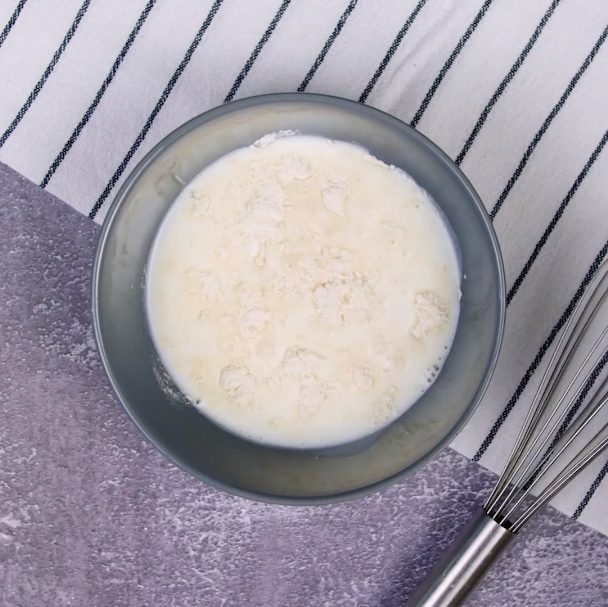;Resize,width=712;)
For the custard, whisk ½ cup of milk with custard powder until no lumps remain.
For the custard, whisk ½ cup of milk with custard powder until no lumps remain.
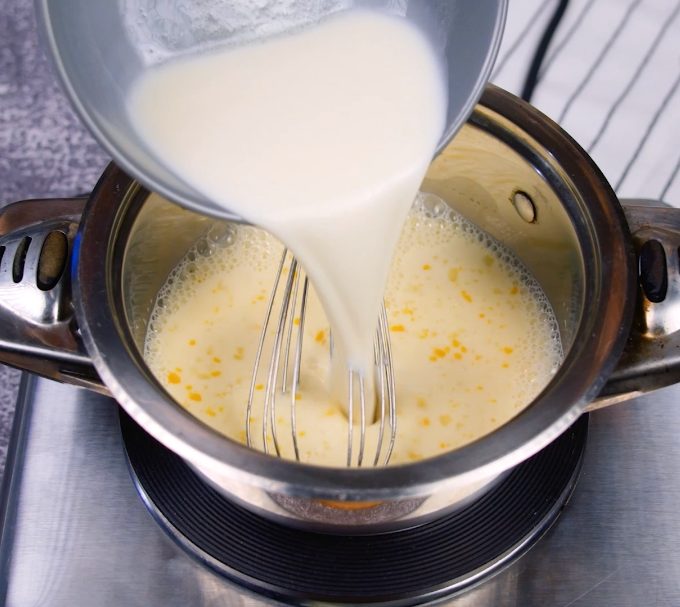;Resize,width=712;)
In a saucepan placed on the lowest heat, whisk together leftover milk, sugar, and an egg. Pour in vanilla custard powder and cook, whisking for 8-10 minutes or until the custard thickens. Pour custard into a small bowl and cover with plastic. Cool down completely and transfer into a piping bag.
In a saucepan placed on the lowest heat, whisk together leftover milk, sugar, and an egg. Pour in vanilla custard powder and cook, whisking for 8-10 minutes or until the custard thickens. Pour custard into a small bowl and cover with plastic. Cool down completely and transfer into a piping bag.
;Resize,width=712;)
For the dough, whisk 1 cup of milk with sugar, crumbled yeast, and 3 tbsp of flour. Set aside for 15 minutes.
For the dough, whisk 1 cup of milk with sugar, crumbled yeast, and 3 tbsp of flour. Set aside for 15 minutes.
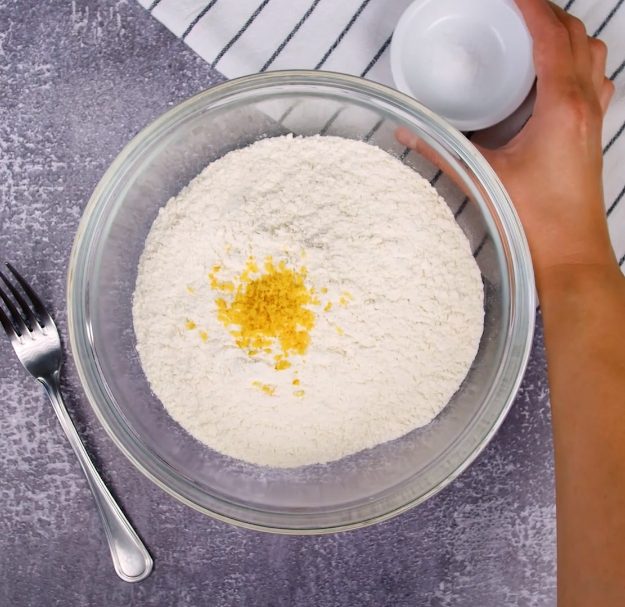;Resize,width=712;)
Whisk the remaining flour with salt and lemon zest.
Whisk the remaining flour with salt and lemon zest.
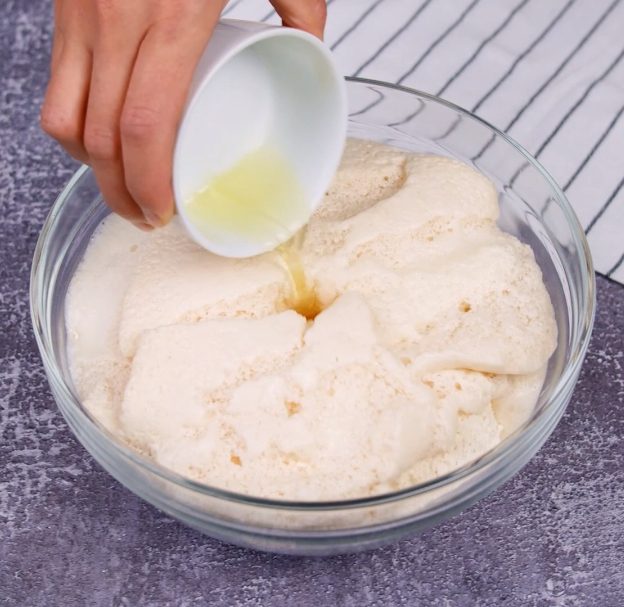;Resize,width=712;)
Add the yeast mixture, followed by vegetable oil and an egg.
Add the yeast mixture, followed by vegetable oil and an egg.
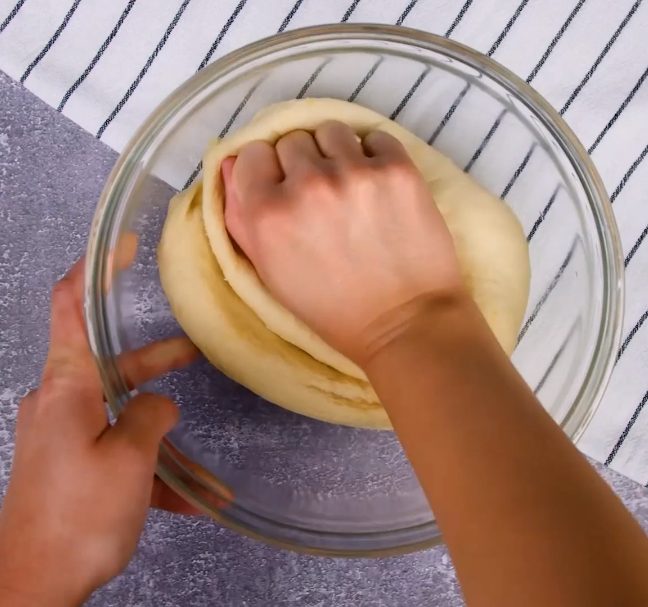;Resize,width=712;)
Knead the dough until smooth. Set aside for 30 minutes.
Knead the dough until smooth. Set aside for 30 minutes.
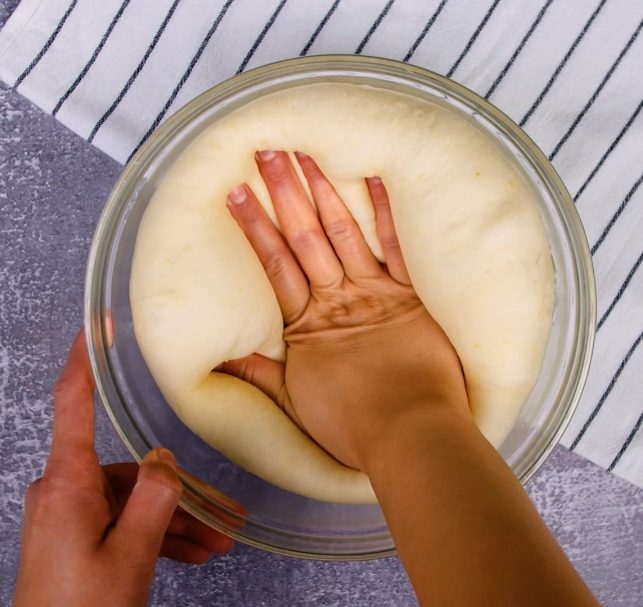;Resize,width=712;)
Once doubled in size, punch down the dough.
Once doubled in size, punch down the dough.
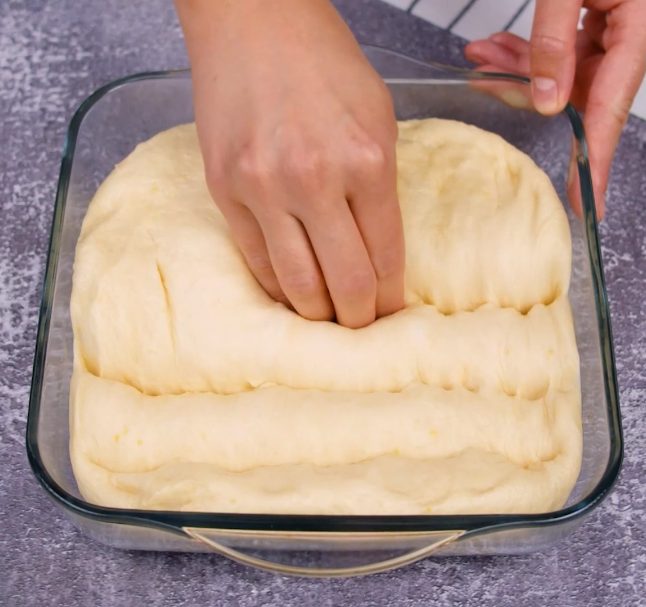;Resize,width=712;)
Spread the risen dough in a square baking pan (8” x 8”/20x20 cm) and press it down with your fingers, forming 3-4 rows.
Spread the risen dough in a square baking pan (8” x 8”/20×20 cm) and press it down with your fingers, forming 3-4 rows.
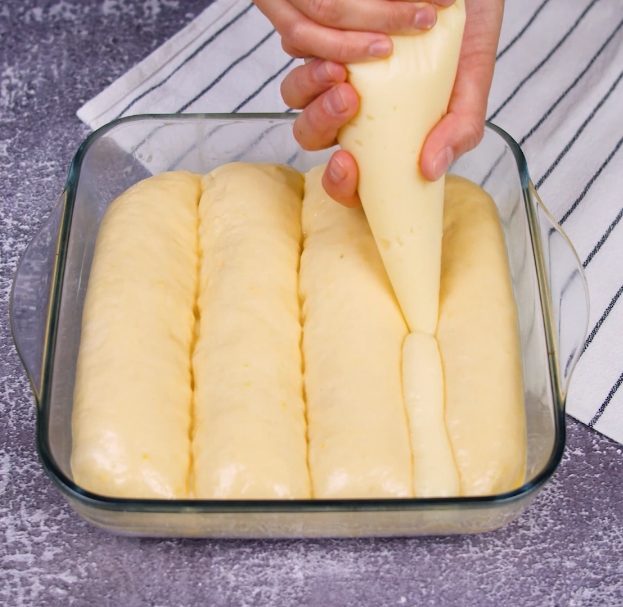;Resize,width=712;)
Brush the dough with an egg wash, then fill the rows with custard.
Brush the dough with an egg wash, then fill the rows with custard.
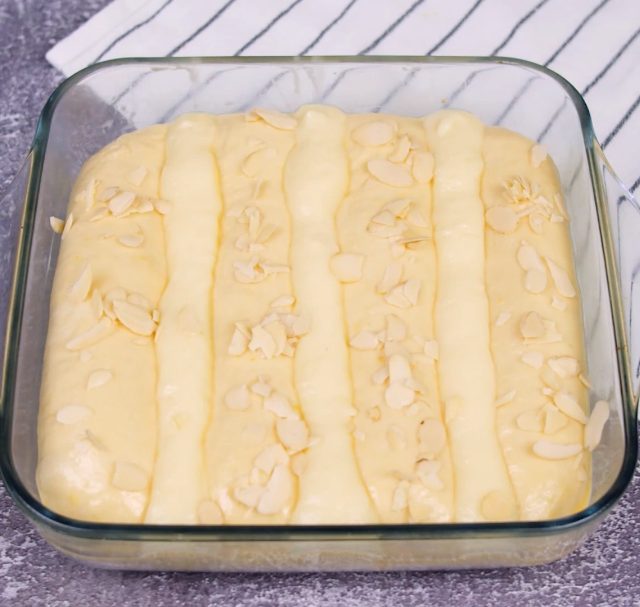;Resize,width=712;)
Sprinkle with almond flakes.
Sprinkle with almond flakes.
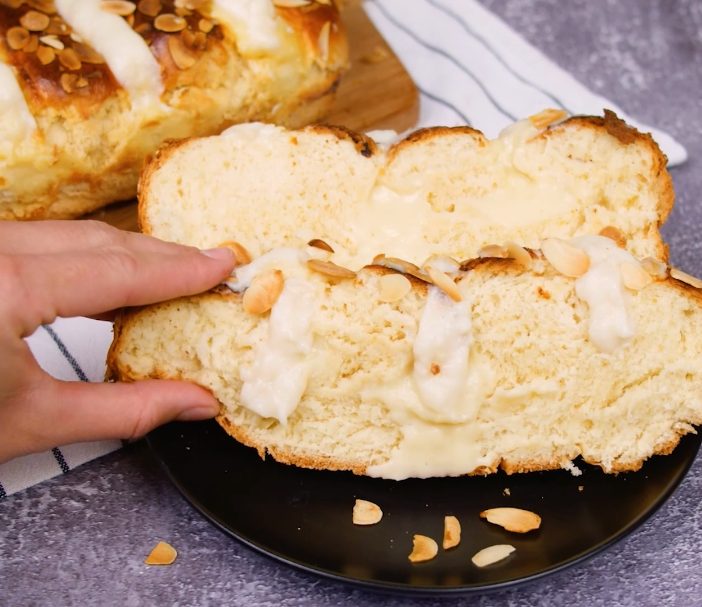;Resize,width=712;)
Bake at 180°C/360°F for around 30 minutes.
Bake at 180°C/360°F for around 30 minutes.
;Resize,width=767;)


;Resize,width=712;)
